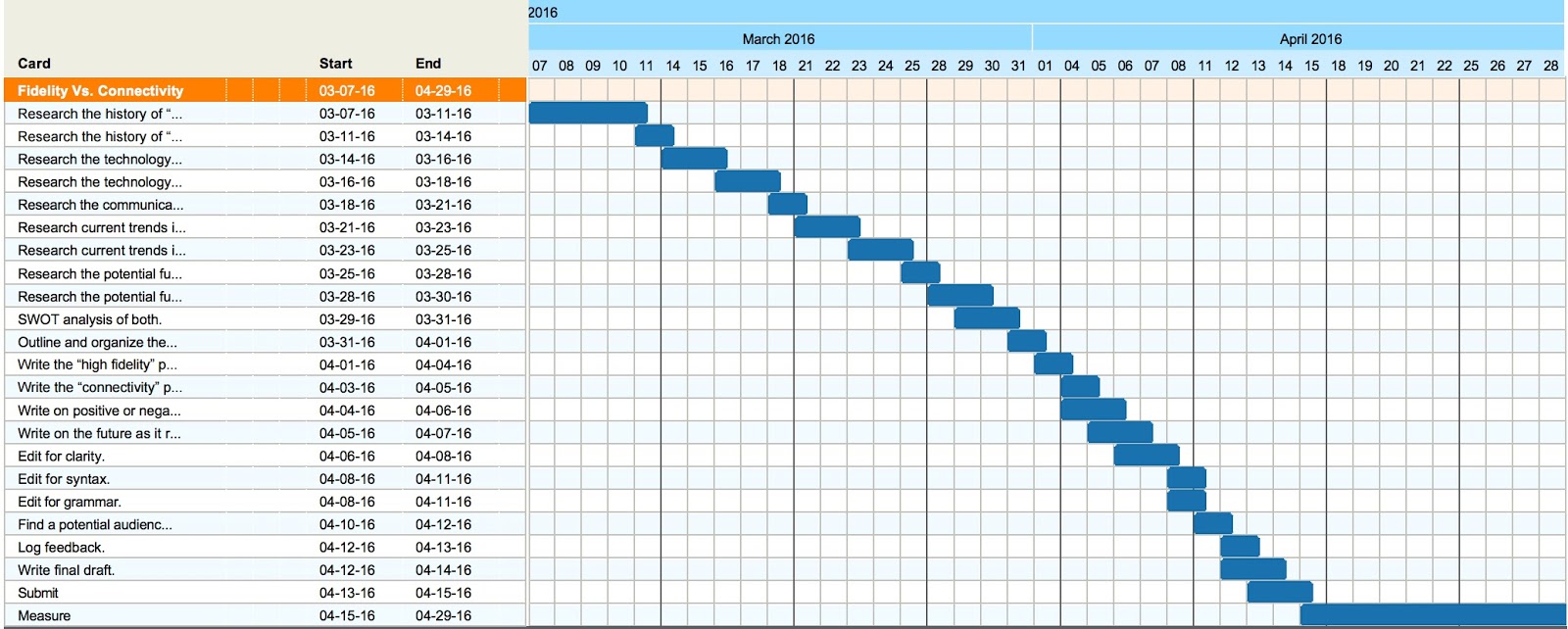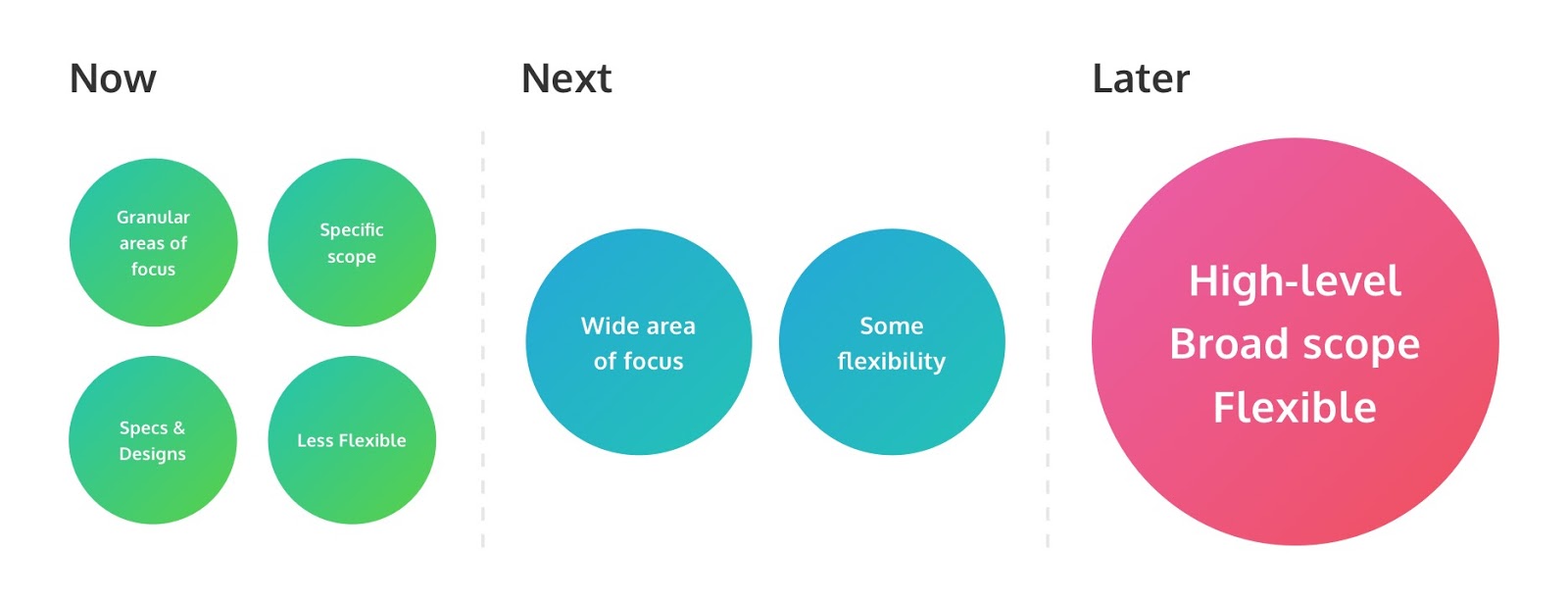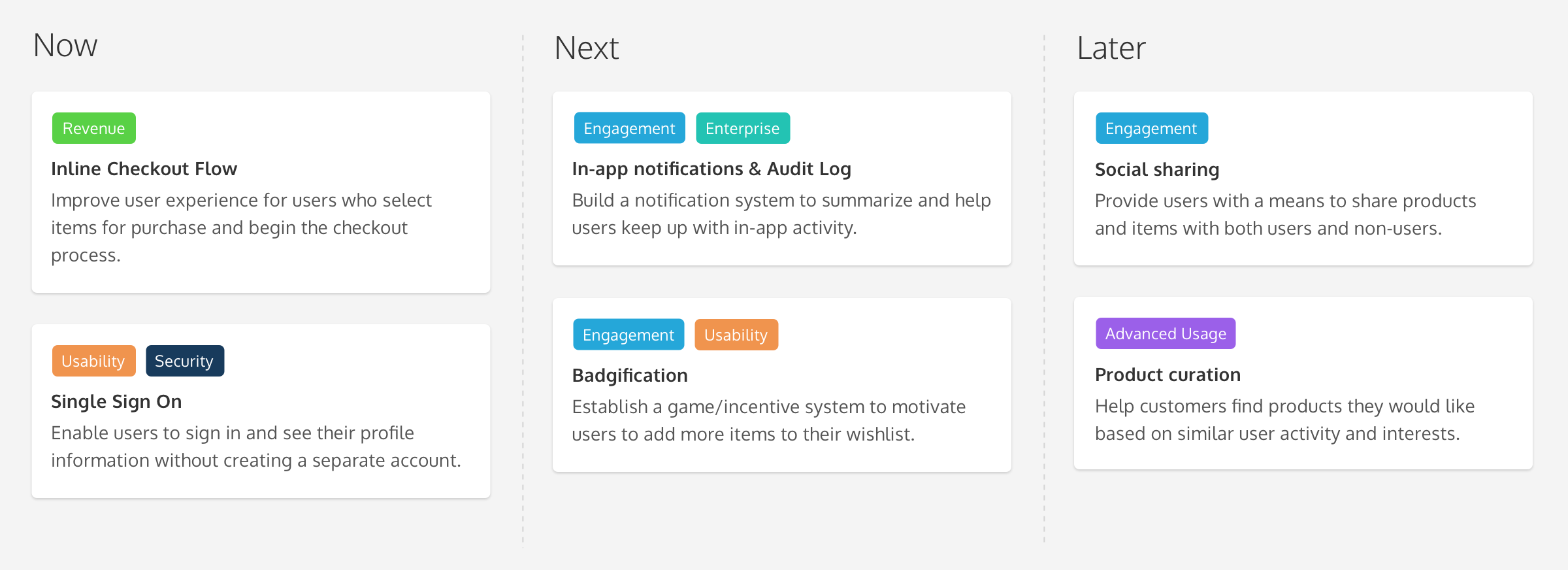A Gantt chart is not a product roadmap: Rethinking timelines

.png)

.png)
Knowing what’s coming up next gives us all a sense of security.
When it comes to product management, having an ongoing timeline of features to be released can make you look really good. Your calendar will be stacked with release dates, letting everyone know exactly when all of the features are set to go live. You can't possibly disappoint your clients or executives with such an impressive list of things to come. And your sales team? Forget about it! They’re thrilled to see all the upcoming stuff you’re working on.
(I hope you’ve caught on to my sarcasm by now.)
Let’s get real: Timelines only look good. In practice, they’re a terrible way to roadmap.
A timeline encourages you to focus less on why you’re doing things and more on how fast you’re doing them—which is not what a product roadmap is meant to communicate.
A good product roadmap helps you focus on your strategy rather than your execution, adding a whole other level of transparency to your organization.
The litmus test for a good product roadmap is that it’s visual, accessible, and clear. It should be the reference point team members use to challenge themselves and one another to link their deliverables back to roadmap goals and OKRs. Most importantly, it should be really, really easy to understand.
Promising deadlines, on the other hand, does nothing but add more stress to you and your team. The more items you add to your timeline, the more you lose sight of why you began doing those items in the first place, leaving you with nothing other than feature bloat and misdirection.

A fully stacked timeline is a security blanket—but the security is provides is false, and inevitably leads to disappointment for everyone involved.
“The problem with a typical roadmap is that it pits Time vs. Things to do, with Time represented on the x-axis, creating this timeline along the top. That’s all well and good at first, especially when you’re representing your short-term projects and your upcoming releases, where your team has given decent estimates and is on board with the given release dates. But the more you add to the roadmap and the further down the line you get, the harder it becomes to manage.” — Janna Bastow, CEO ProdPad
When you work with an ongoing timeline of features, those features eventually pile up as you struggle to meet the expectations you set during ambitious planning.
You have essentially put yourself in a corner with no flexibility and no room for things to change… and let’s not pretend that things never, ever go wrong in life, because the truth is, they do. Life just happens.
Having the ability to pivot when necessary is absolutely key, particularly when working with SaaS products. You need to have flexibility to change course and adapt as your market is changing—but as long as you’re sticking to that irreversible timeline, you won’t be able to get that out of that build trap.
Lucky for you, there is a way out of this!
Take a step back from constantly building feature after feature, and give attention to understanding the problems you are trying to solve in the first place. A product vision template helps you focus on that—allowing you to narrow down the what, why and for whom you’re building your product.
Here’s an example of what a product vision template looks like:
FOR (target customer)
WHO (statement of need or opportunity)
THE (product name) IS A (product category)
THAT (key benefit, reason to buy)
UNLIKE (primary competitive alternative)
OUR PRODUCT (statement of primary differentiation)
Once you’ve got this set, map out your objectives. This involves identifying outcome-based goals that are tied to your company strategy. Some people call these OKRs, some KPIs, and some companies even have a North Star objective they work towards.
Your objectives help keep your team pointing in the right direction and working on the right things.
Focusing on output means counting how many features have been completed over time.
Focusing on outcomes means you’re tying results back to your company-level goals.
At the end of the day, it doesn’t matter that you built 15 new features. What matters is that you met the objectives you set out to complete.
A product manager’s job is not just to release feature after feature - but to understand, track, and validate the impact of every item being released. You can’t achieve that by constantly pushing out things and without focusing on the metrics.
Think of it this way: You either release a bunch of new features just to keep people happy, or you reach your goal to increase lead conversion by 20%. While the first may provide temporary joy, the second actually helps you have a measurable and sustainable impact that you can repeat in the future to keep your product going.
Feeling ready to ditch that gantt chart? Let me introduce you to the lean product roadmap.
Instead of a single line denoting time, a lean product roadmap operates within buckets of time. At ProdPad we like to call these time-horizons:

Now
This should be the things you’re working on right now and have committed resources to. You can be as granular as you want in your description of what is being built —after all, you’re already building it!
Next
This is for projects that you know you will work on soon, but for which prioritization is flexible.
Later
This is for the issues that you know you want to tackle, but aren’t quite sure what the solutions will look like yet. This is about possible problems you will tackle as a team.
And when you shake the magic ingredients together, you end up with a product roadmap:

This style of roadmap takes your vision, objectives, and initiatives into consideration and allows you to communicate:
With all this in place, you can change the discussion from “when is the next feature coming” to “this is what we are doing and why.” This shift will inevitably create better conversations with your customers and team, while building transparency and trust.
A roadmap should communicate more than just deadlines and due dates. It should communicate your product strategy in a way that is clear, efficient, and realistic.
That means providing a holistic view of the what and why. Focus less on the output, and more on the outcome to highlight progress and goals achieved.
There’s more to creating a product than writing dates on a calendar. Deadlines certainly have their place—but their place comes after you fully understand what your overall vision and direction is, and have taken the time to validate that.